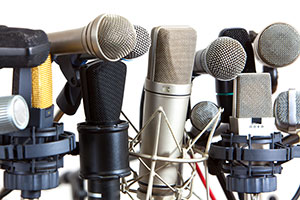 I’ve written about this before. Check out my post, “What Is the Difference Between Condenser and Dynamic Microphones?”
I’ve written about this before. Check out my post, “What Is the Difference Between Condenser and Dynamic Microphones?”
“Audio Visual Edit” wrote an article on this as well. They go into detail describing seven different types of microphones! IN my post, I say there are really only 2 main types – dynamic and condenser (sometimes called “electret”). Ribbon mics could be called a 3rd type, though they are really just a different kind of dynamic mic, basically.
So I find it interesting that AVE talks about 7 types. Check it out at the link at the end of this page.
AVE describes how the different kinds of microphones work, and their unique features.
The microphone types include: Dynamic, small and large-diaphragm, vacuum-tube, ribbon, electret, and piezo. They also detail which scenarios each type of microphone would be best suited for.
For instance, the small-diaphragm microphone would be a solid choice if you need a microphone with very accurate sound. The writer provides an excellent resource for anyone who is involved with recording and performance, giving a great summary of the various types of microphones, without being too complicated or wordy.
Key Takeaways:
- Overall, there are still only 2 main types of mic – dynamic and condenser. All the other “types” are categories of one or the other.
- Condenser mics (large diaphragm, small diaphragm, and tube mics) require external power called “phantom power” to work.
- Because of the different ways that these microphones treat and reproduce sounds, each type works better for certain instruments and situations and less well for others. So it’s a good idea to have a variety in your collection to cover all situations
“The advantages of the dynamic mic are its simplicity and robustness. The disadvantage is that the diaphragm is weighed down a little by the coil, hence it isn’t quite as responsive to quickly-changing transients as other types of mic.”
Read the Audio Visual Edit take on this topic here: http://www.audiovideoedit.com/2017/01/18/microphone-types/
Leave a Reply